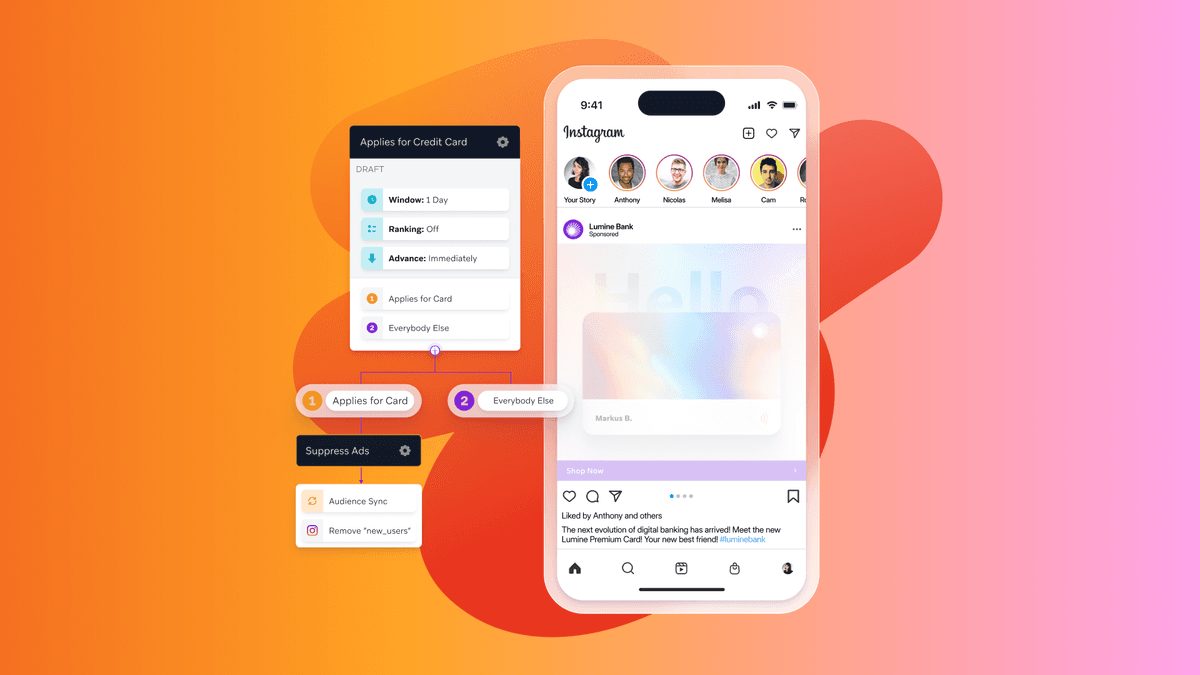The TRUST Framework: Customer Engagement Creative Must-Haves
Published on February 03, 2021/Last edited on February 03, 2021/5 min read


Emily Moschet
Senior Strategic Business Consultant, Industry Solutions, BrazeToday’s consumer landscape is many things, but most of all it’s noisy. The number of digital platforms and channels that individuals use to engage with their preferred brands keeps growing, giving marketers more opportunities to drive action but also raising the risk that consumers tune out of their messaging completely.
In this increasingly cross-channel world of customer experiences, it’s no longer enough to send a well-written email or push notification and hope for the best. Today’s marketers need to ensure that everything—from their marketing mix allocation to the creative that defines their campaigns—is working together to drive both desired customer connections and their company’s long-term business goals.
To help out, we’ve put together a look at the data-driven TRUST framework developed by Braze to help our customers develop creative that’s aligned both with individual customer preferences and their own organizational KPIs. Take a look!
What is the TRUST Framework?
Consumers are influenced by both the channel that brands use to speak to them and the content of messages in those channels; we’re seeing top-performing brands increasingly using both of these aspects to actively humanize their brand experiences, making them more personalized and less intrusive.
Many marketers are already quite familiar with the helpful creative guidance offered by Facebook’s thumb-stopping Brilliant Basics narrative or YouTube’s ABCs guidelines. Similarly, the best practices for leveraging and optimizing creative in Braze to support these more impactful, more human experiences can be understood in the context of a five-part system we’ve dubbed the TRUST framework:
- Themed Objective
- Right Reach
- User-Centric
- Simple Statements
- Testable Elements
Let’s explore each aspect of the framework and the role it can play in creating successful, “human” content across a comprehensive, cross-channel brand experience:
1. Themed Objective
The first step in designing a creative message is ensuring that you’re keeping your business goals front of mind. Then it’s possible to understand what actions you’re trying to get your users to take and what KPIs are the essential ones for you to track success. At a high level, we recommend that you center your business objectives around key pillars of growth, including:
- Acquisition: Kicking off the customer/brand relationship with effective onboarding
- Engagement/Reengagement/Retention: Keeping customers coming back, establishing loyalty, increasing lifetime value (LTV), and prioritizing churn prevention
- Conversions: Increasing profitability via sales or other meaningful monetization drivers
2. Right Reach
We’ve all heard the adage that exceptional marketing requires brands to reach their customers in the right place at the right time, with the right message—and at Braze, helping marketers make that vision a reality is one of our main priorities. In fact, Braze research has found that for most major business objectives, there’s a relatively tried-and-true order of operations from channel activation through to the customer journey that will lead to your desired outcome. For instance, push notifications are the most effective channel when it comes to acquisition, driving 4X more signups and account creations than email and 11X more than in-app messages.
While our research has found that cross-channel journeys see the strongest results, it’s still helpful to understand the messaging channel sequence that’s most likely to help you reach your KPIs.

3. User-Centric
As with all elements within the TRUST framework, having both your business objective and the user in mind at all times is critical. Personalization is core to true user-centric experiences, so it’s important to be able to customize your outreach effectively. Our research has found that messages using liquid personalization are 4X more likely to drive signups, making them a critical tool for starting things off on the right foot for new customers.
Additionally, it’s important to keep emotion in mind as you build out your campaigns. By taking steps to increase positive emotions associated with an action (i.e. excitement, wonderment, intrigue) and reducing negative sentiment (i.e. boredom, dread), you can do a lot to support a better customer experience and stronger long-term results.
4. Simple Statements
No matter what channel (or channels) you’re using, keeping messaging clear and concise increases the likelihood that recipients take action. In general, a clear, concrete call-to-action (CTA) like “Shop Now” or “Explore Here” tend to drive higher conversion rates by 3X. And when requesting information from a customer, leveraging a form with autofill can increase onboarding rates. (Plus, deep-linking directly to product pages increases engagement rates from lapsed buyers by a whopping 83X!)
In general, it’s always smart to consider what will eliminate the friction associated with signing-up, repeatedly engaging, and purchasing from your brand. The easier you make it for each user, the more likely they are to take key actions and build a strong relationship with you.
5. Testable Elements
As with all messaging tactics, we recommend that marketers test several iterations of creative against various customer segments, content, channels, and cadence. Your testing should drive movement against KPIs and take into account the entirety of your customer experience (i.e. what are you driving with your social media campaigns? How can push and other owned channels complement this strategy?)
Don’t forget about seasonality. To ensure that optimizations are in place during your peak business periods for both acquisitions and transactions, we recommend carrying out your testing at least two weeks in advance. It’s also important to schedule certain tests against key purchasers in an “in-market” environment (for example, the holiday season) in order to gain future learnings.
Final Thoughts
Every brand is different. But by following the Braze TRUST framework, it’s possible to align your creative content with your unique business objectives, helping to ensure you’re building toward your organization’s growth goals, while also offering deeper connections through communications with your customers.
Interested in learning more about optimizing your campaigns? Check out our exclusive look at campaign testing, “What’s Testing, Anyway?”
Related Tags
Be Absolutely Engaging.™
Sign up for regular updates from Braze.
Related Content
View the Blog
What is triggered communication? How to automate smarter, timely campaigns

Team Braze

One year of the Braze Data Platform: Elevating user experiences and cross-team collaboration

Sahiz Kaur

Global and regional AI adoption: What it means for customer engagement
